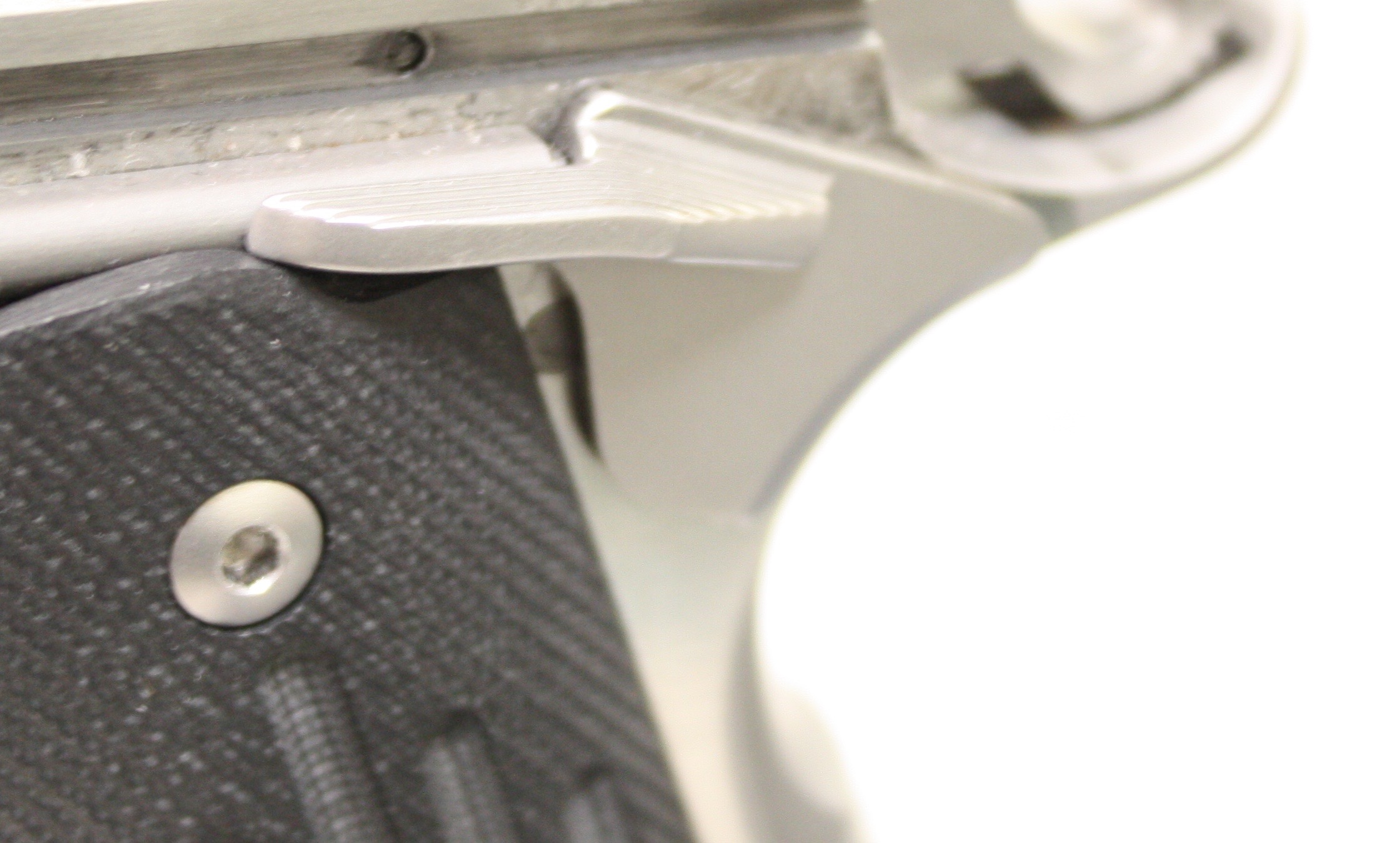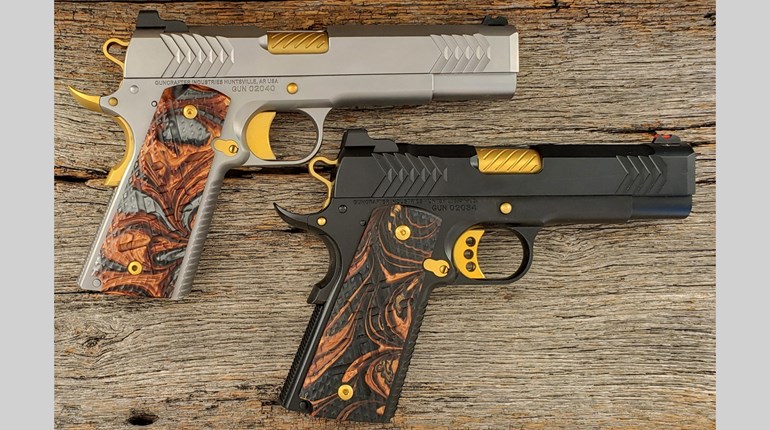
Another one of those tasks that requires a spare hand, you could do it with a vise and file, but there’s an easier, hassle-free way.
Whereas a factory (pre-fitted) thumb safety is installed by inserting its pin into the frame, then orienting the safety to roughly its “on” position before depressing the thumb-safety detent and pressing the safety into place, the sear leg of a new thumb safety is typically slightly oversize to ensure it will perform its intended function of blocking the sear when in the “on” position and allowing passage of the sear when “off.” Before getting started, there’s two things you should do first:
In their book, Kuleck and Oldham offer a good tip, “A preliminary check of the thumb safety’s fir in the frame, with no fire-controls parts is a good idea. You can take this opportunity to install the hammer (only) with the hammer pin to double-check if the thumb safety will block the hammer when `on.” If it doesn’t, consult with your safety vendor.”
At the same time, verify make sure the thumb-safety plate (the part of the safety that interfaces with the thumb-safety detent is orthogonal—at a right angle—to the thumb safety’s pin. Or else, all the work you’re about to do will be for nothing.
The Present Arms Gunners Mount M1911 Armorers Plate and 1911 Fixture block I mentioned in a previous entry is perfect for this task, because the fixture contains a hole that captures the thumb-safety pin and sear lug while orienting the part in the proper position for you to remove metal while holding the sear lug. Furthermore, the depth of the channel holding the lug is such that bottom of the sear lug is level with the top of the fixture, which aids in keep your file level while filing the area of the lug where it interfaces with the sear. You’re simply creating clearance for the thumb-safety lug to pass the sear leg.

Gradually, take a few swipes with the file, remove the safety from the fixture and trial fit the part in the frame (without the plunger-tube assembly: slide-stop plunger, plunger spring and thumb-safety plunger) present. Rinse, lather and repeat until the portion of the thumb-safety lug will enter the frame past the sear. Then, verify you can rotate the thumb safety from the “on” position to the “off” position without interference. If rotation is difficult, make sure the lug isn’t binding on the safety. Binding can also occur in between the safety and the frame, the small channel behind the sear lug, so have some small files handy.

Once the thumb safety is rotating freely, it’s important that it be able to reliably stay in its “on” position when engaged and “off” when disengaged. So you need to test the thumb-safety detent. Do so by installing the slide stop and the plunger assembly. Then install the thumb safety and check the safety detent as you “click” the safety on and off. If you want a more-positive feel, Kuleck and Oldham suggest you can obtain it by using a ball-end bit in a Dremel to slightly deepen the detent. According to Kevin Greeley of Greeley Custom, “deepening the detent makes the thumb safety harder to engage. The slight radius under the detent is responsible for the amount of pressure it takes to sweep the safety off. If you have a sharp edge, it is harder to move downward. If it has a radius, it will be easier.” While it’s a matter of personal preference, it’s fairly easy to customize to the shooter.
In the next entry, I’ll cover how to finish grip-safety installation.




































